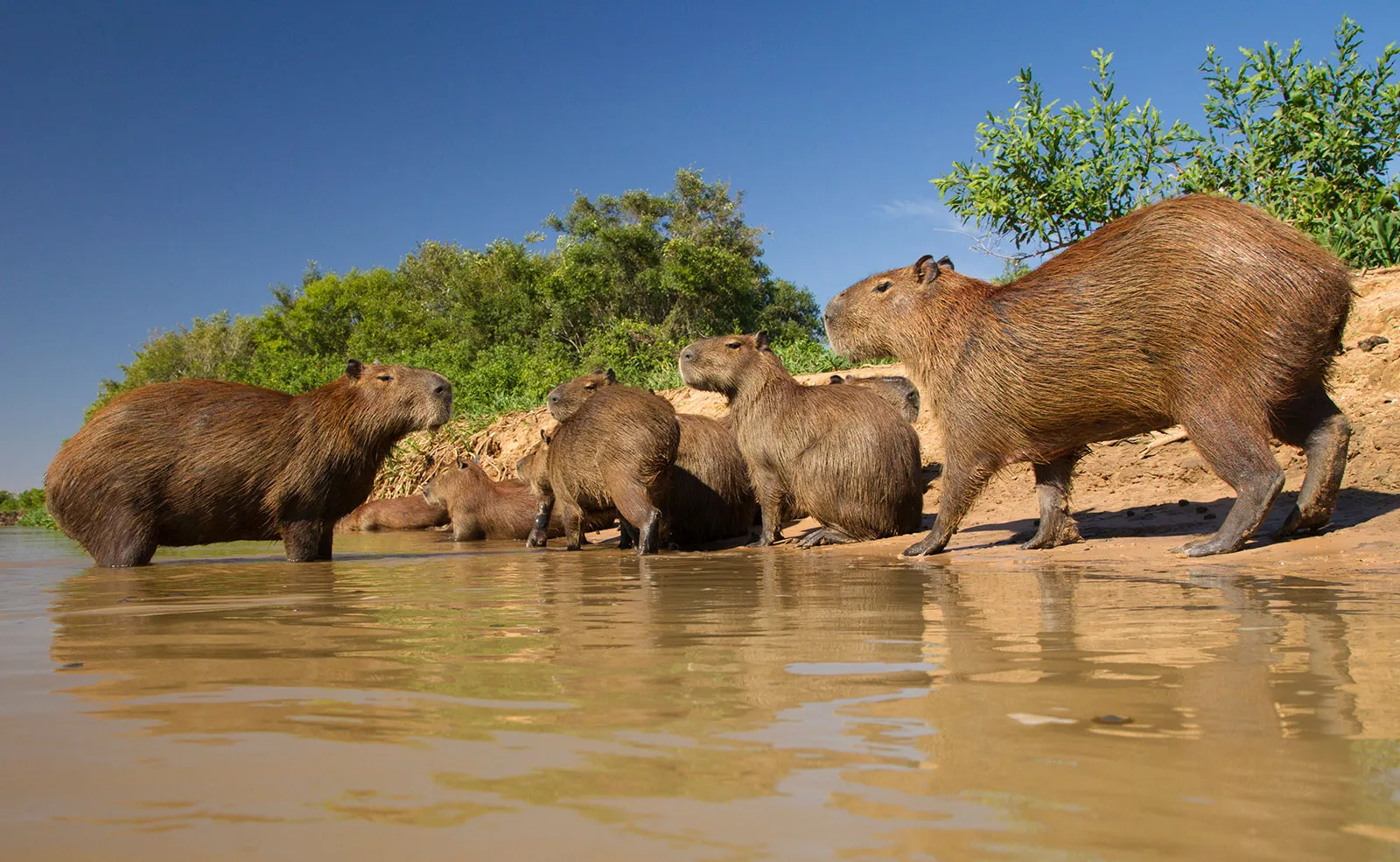As an expert in the field of zoology, I have had the privilege of studying and observing various unique animal species. One such creature that has captured my attention is the Albino Capybara . In this comprehensive article, I will delve into the fascinating world of these rare rodents, sharing my knowledge and insights to provide you with a thorough understanding of their biology, habitat, behavior, and conservation status.
What is an Albino Capybara?
The capybara (Hydrochoerus hydrochaeris) is the largest rodent in the world, native to South America. These semi-aquatic mammals are known for their stocky build, short head, and reddish-brown fur. However, the albino capybara is a rare genetic variant that lacks pigmentation, resulting in a completely white coat and pinkish eyes.
Albinism is caused by a genetic mutation that affects the production of melanin, the pigment responsible for skin, hair, and eye color. In capybaras, this mutation is recessive, meaning that both parents must carry the gene for their offspring to be albino.
| Characteristic | Capybara | Albino Capybara |
|---|---|---|
| Coat Color | Reddish-brown | White |
| Eye Color | Dark | Pink or Red |
| Size | Large (up to 1.5m long) | Large (up to 1.5m long) |
| Weight | 35-65 kg | 35-65 kg |
Habitat and Distribution
Capybaras are found throughout much of South America, primarily in countries such as Brazil, Venezuela, Colombia, Paraguay, and Argentina. They inhabit a variety of environments, including:
- Wetlands
- Marshes
- Riverbanks
- Flooded grasslands
These habitats provide the capybara with ample water sources, which are essential for their survival. Albino capybaras share the same habitat preferences as their pigmented counterparts, but their unique appearance may make them more vulnerable to predation.
Behavior and Social Structure
Capybaras are highly social animals, living in groups of around 10-20 individuals. These groups consist of a dominant male, several females, and their offspring. The social hierarchy within the group is maintained through various behaviors, such as scent marking and vocalizations.
Albino capybaras, being genetically identical to their pigmented counterparts, exhibit the same social behaviors. However, their lack of pigmentation may affect their ability to camouflage and avoid predators, potentially impacting their survival and social dynamics.
Diet and Feeding Habits
As herbivores, capybaras primarily feed on aquatic plants, grasses, and fruits. Their semi-aquatic lifestyle allows them to access a variety of vegetation both on land and in the water. Capybaras have a unique digestive system that enables them to efficiently process tough plant material.
Albino capybaras have the same dietary requirements as their pigmented counterparts, but their striking appearance may make them more noticeable to predators while foraging.
Reproduction and Life Cycle
Capybaras reach sexual maturity at around 1.5 years of age. Females typically give birth to a litter of 4-5 young after a gestation period of approximately 150 days. The young are precocial, meaning they are born fully developed and capable of moving and feeding independently.
Albino capybaras follow the same reproductive cycle as their pigmented counterparts. However, the genetic nature of albinism means that the offspring of two albino capybaras will always be albino, while the offspring of an albino and a pigmented capybara will be carriers of the albinism gene.
Conservation Status and Threats
Although capybaras as a species are not currently considered threatened, they face various challenges in the wild, including:
- Habitat loss and fragmentation due to human activities
- Hunting for their meat and hide
- Conflict with farmers due to crop raiding
Albino capybaras, being more conspicuous, may be at a higher risk of being targeted by hunters or predators. Additionally, their lack of pigmentation may make them more susceptible to skin damage from exposure to the sun.
The Importance of Studying Albino Capybaras
Researching and understanding albino capybaras not only satisfies our scientific curiosity but also provides valuable insights into the genetic mechanisms behind albinism and its implications for animal survival and adaptation.
By studying these rare individuals, we can:
- Gain a deeper understanding of the genetic basis of albinism
- Investigate the potential ecological and behavioral consequences of albinism in capybaras
- Develop conservation strategies to protect these unique animals and their habitats
Conclusion
The albino capybara is a fascinating and rare example of genetic variation in the animal kingdom. By delving into their biology, behavior, and conservation status, we can appreciate the complexity and beauty of these remarkable rodents.
As an expert in the field, I strongly believe in the importance of continued research and conservation efforts to protect not only albino capybaras but all wildlife. By raising awareness and supporting scientific endeavors, we can ensure that these magnificent creatures continue to thrive in their natural habitats for generations to come.
Stay in touch to get more updates & news on Headlines!



